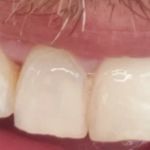1. What Is Dead Pulp?
The pulp of your tooth is the soft tissue inside, which contains nerves, blood vessels, and connective tissue. A tooth’s pulp can become damaged due to various factors, and when it dies, it is referred to as "dead pulp" or "pulp necrosis." This condition occurs when the pulp becomes infected or the blood supply is cut off due to trauma, decay, or other dental issues. When the pulp dies, it can no longer heal itself, and the tooth may require professional treatment to prevent further complications.
“I had no idea that the pulp of my tooth could die. It wasn’t until I started experiencing pain and swelling that I realized something was wrong,” shares a patient who dealt with pulp necrosis. “Now I understand how important it is to take care of my teeth before it gets to this point.”
2. Causes of Dead Pulp
There are several factors that can lead to dead pulp. Some of the most common causes include:
- Tooth Decay: If cavities are not treated in time, bacteria can reach the pulp and cause infection, which can eventually lead to pulp necrosis.
- Trauma: A blow to the tooth, such as from an accident, can damage the blood vessels inside the pulp, causing it to die.
- Gum Disease: Advanced gum disease can sometimes lead to pulp necrosis, especially if the infection spreads to the tooth roots.
- Failed Dental Work: If a dental filling or crown fails, it can expose the pulp to bacteria, leading to an infection that causes the pulp to die.
Understanding the causes of dead pulp can help you prevent this condition by taking care of your teeth and seeking treatment for any dental issues promptly.
3. Symptoms of Dead Pulp
The symptoms of dead pulp can vary depending on the severity of the infection. Some of the most common signs include:
- Pain: Initially, you might experience sharp or throbbing pain in the affected tooth, which can become more intense over time, especially when chewing or touching the tooth.
- Swelling: The gum around the infected tooth may become swollen and tender, and you may notice a bump or abscess near the tooth.
- Discoloration: A dead pulp can cause the tooth to turn dark, often a grayish or black color, as the blood supply to the tooth is compromised.
- Bad Breath: If the pulp infection is left untreated, it can lead to persistent bad breath or an unpleasant taste in your mouth.
“I ignored the small discomfort in my tooth for a while, but eventually the pain got worse and my tooth started turning gray. That’s when I went to the dentist and discovered the pulp had died,” says a patient who experienced these symptoms firsthand.
4. Treatment Options for Dead Pulp
If you suspect that you have dead pulp, it’s essential to see a dentist immediately. Ignoring the issue can lead to more serious complications, such as the spread of infection to the jawbone or other teeth. Some of the main treatment options for dead pulp include:
- Root Canal: A root canal is the most common treatment for dead pulp. During this procedure, the dentist removes the infected pulp, cleans the tooth, and seals it to prevent further infection.
- Tooth Extraction: In some cases, if the tooth is severely damaged, it may need to be extracted to prevent the infection from spreading.
- Antibiotics: If there is significant infection, the dentist may prescribe antibiotics to help control the spread of bacteria before or after the root canal procedure.
“I was relieved to learn that a root canal could save my tooth. The procedure went smoothly, and I haven’t had any issues since,” shares a patient who opted for a root canal treatment to address their dead pulp.
5. Real-Life Experience: Dealing with Dead Pulp
Consider the experience of Sarah, a woman who had been experiencing persistent tooth pain and discoloration. After visiting her dentist, she learned that her tooth had a dead pulp caused by untreated decay. “I was so worried about losing my tooth, but my dentist was reassuring. After the root canal, the pain was gone, and my tooth looks great again,” she says. “It was a wake-up call for me to always address dental issues as soon as they arise.”
Sarah’s experience highlights the importance of early intervention. If left untreated, dead pulp can cause irreversible damage to the tooth and potentially spread to the surrounding tissues. Regular dental checkups can help prevent such issues from escalating.







 Maui Whitening Orlando4.0 (32 review)
Maui Whitening Orlando4.0 (32 review) Bloomington Southside Dental Care3.0 (26 review)
Bloomington Southside Dental Care3.0 (26 review) Christiana Dental Center4.0 (650 review)
Christiana Dental Center4.0 (650 review) Carolina Dental Arts - New Bern Ave4.0 (152 review)
Carolina Dental Arts - New Bern Ave4.0 (152 review) Equitas Health Short North Medical Center3.0 (96 review)
Equitas Health Short North Medical Center3.0 (96 review) Prosthodontics of Madison - Kendra Schaefer, DMD & Christine Roenitz, DMD4.0 (25 review)
Prosthodontics of Madison - Kendra Schaefer, DMD & Christine Roenitz, DMD4.0 (25 review) The Importance of Oral Health Education During Pregnancy for a Healthy Pregnancy
The Importance of Oral Health Education During Pregnancy for a Healthy Pregnancy Best Tips for Brushing Your Teeth Properly for Healthy Gums: Essential Techniques for Oral Health
Best Tips for Brushing Your Teeth Properly for Healthy Gums: Essential Techniques for Oral Health Why Skipping Dental Checkups Can Lead to Bigger Oral Health Problems
Why Skipping Dental Checkups Can Lead to Bigger Oral Health Problems Advantages of Porcelain Dental Restorations
Advantages of Porcelain Dental Restorations How Can Diabetes Cause Tooth and Gum Problems? Preventing and Managing Oral Health Issues
How Can Diabetes Cause Tooth and Gum Problems? Preventing and Managing Oral Health Issues Healthy Habits for Promoting Good Oral Health and Hygiene: Tips for a Healthy Smile
Healthy Habits for Promoting Good Oral Health and Hygiene: Tips for a Healthy Smile